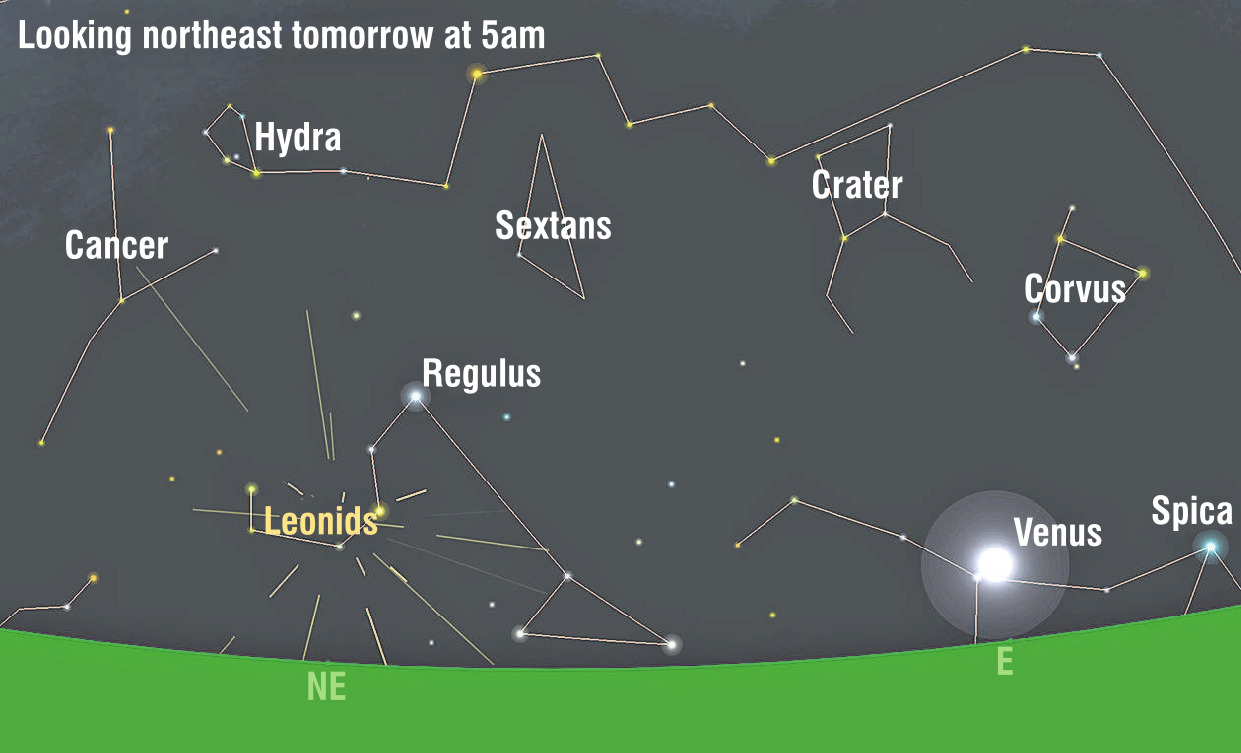
You only need a deckchair and warm clothes to observe the Leonids. The meteors are easily visible to the naked eye as fast-moving streaks of light. While they originate from the constellation Leo, the meteors can appear anywhere in the sky.
The Leonids are renowned for being both bright and fast-moving. The parent comet of the Leonid Meteor Shower, Tempel-Tuttle, orbits the sun, leaving a trail of debris in its wake. When the Earth passes through this debris trail, the particles burn up in the atmosphere, creating the brilliant streaks of light we see as meteors.

While the Leonid Meteor Shower typically produces an average of 15 to 20 meteors per hour during its peak, the unpredictability of meteor showers adds an element of excitement for stargazers. Occasionally, when the Earth crosses particularly dense debris trails, the Leonids have been known to produce meteor storms with significantly higher rates of meteors per hour. Unfortunately, meteor experts are not forecasting a meteor storm this year.
As astronomy enthusiasts gear up for the 2023 Leonid Meteor Shower, we can witness a celestial display that connects us to the broader cosmic interplay between comets, debris, and the Earth's atmosphere.











